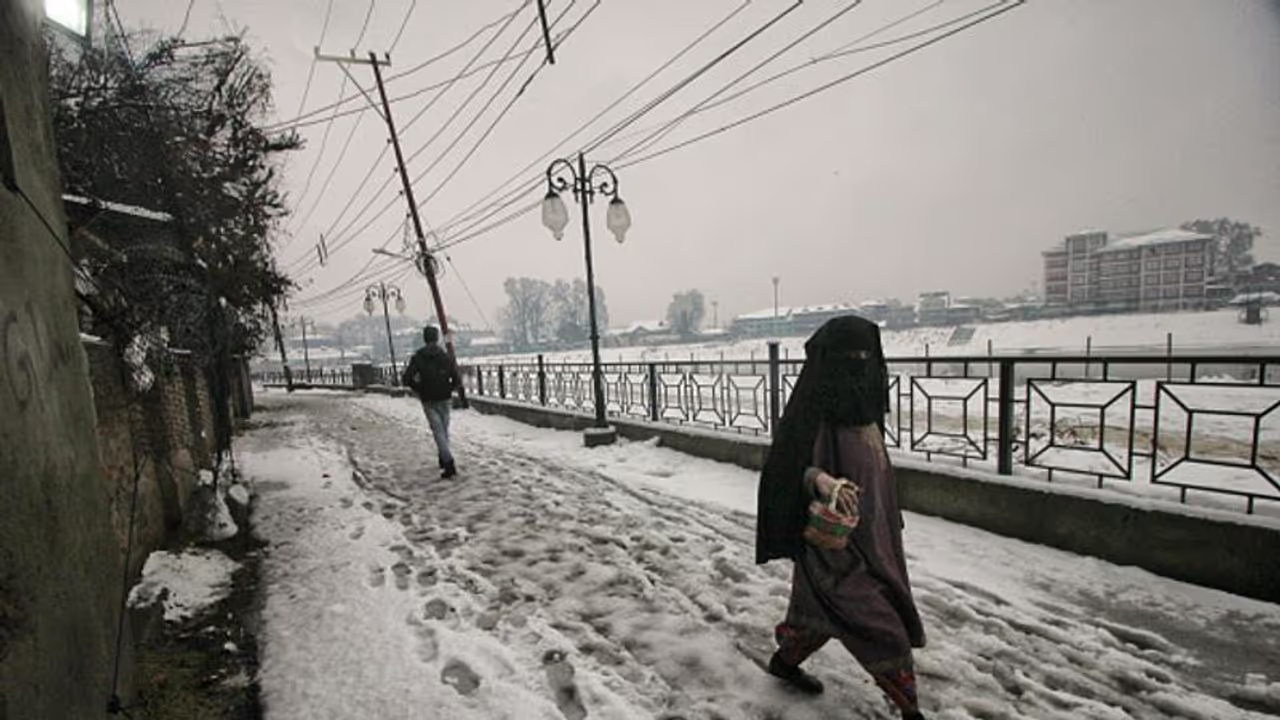The IMD stated that the western disturbance as a cyclonic circulation over adjoining Jammu and Kashmir between 3.1 and 5.8 km above mean sea level has moved away northeastward.
Srinagar: Chillai-Kalan, a 40-day long period of extreme cold in Kashmir, began on December 21 and will continue till January 31 followed by Chillai-Khurd and Chillai-Bachha.

A 20-day long Chillai-Khurd (small cold) starts from January 31 to February 19, and a 10-day long Chillai-Bachha (baby cold) occurs between February 20 and March 2.
According to the India Meteorological Department (IMD), the period mostly remains wet as the upper part of the Valley received heavy snowfall, and the maximum temperature drops considerably.
During this period, water bodies like lakes, rivers and streams get frozen with a thick layer of ice forming on the surface.
The maximum and minimum temperature at isolated places over Jammu and Kashmir was recorded between -1.6°C and -3.0°C below normal, the weather agency said.
In Srinagar, the minimum temperature is 0 degree Celsius and in Pahalgam at -7. In Gulmarg, the temperature was below - 9 degree Celsius, IMD said.
Speaking to media, a resident from Srinagar said, "In this period, snow gets frozen, and it doesn't melt. Kashmiris face trouble in this phase due to heavy snowfall and cold wind. It has been named Chillai-Kalan by our ancestors."
"Earlier, people used to drink water after melting snow. It is the coldest phase of winter. From February, the atmosphere starts getting better," another local said.
"Before starting of Chillai Kalan, people here start storing wood, coal and other products which are useful in producing warmth. Majority of the commuters prefer to be home before the sun sets," the local further added.
The IMD stated that the western disturbance as a cyclonic circulation over adjoining Jammu and Kashmir between 3.1 and 5.8 km above mean sea level has moved away northeastward.
